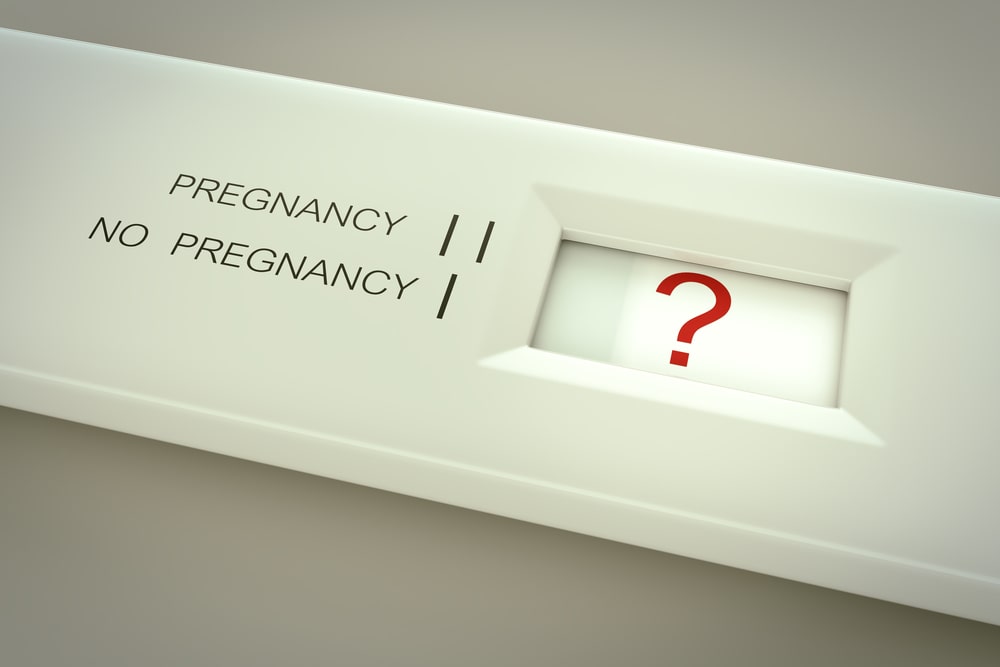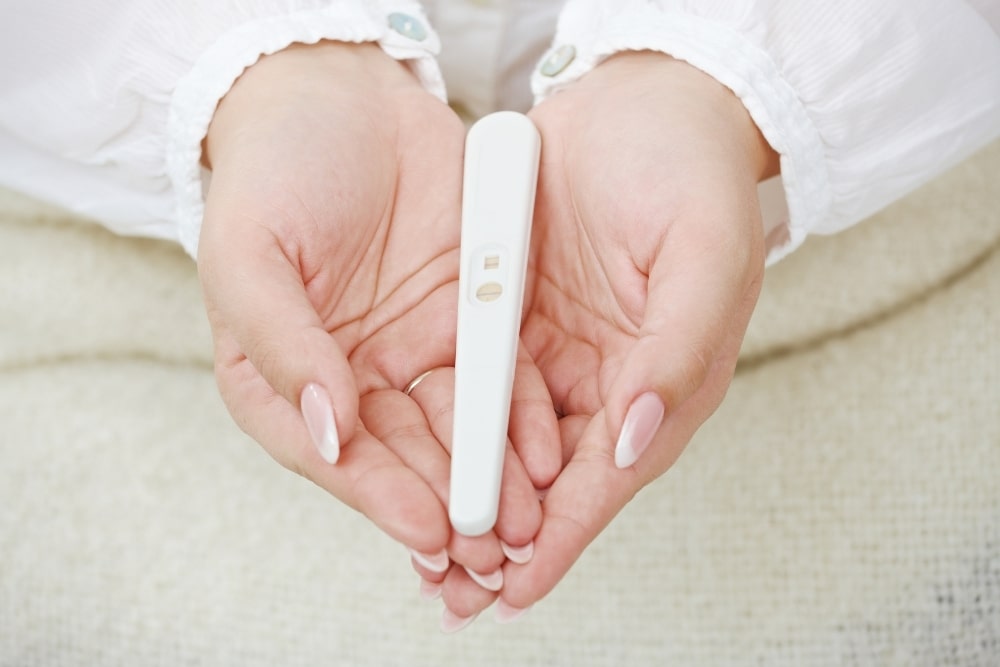Discovering that you may be pregnant can be both an exciting and stressful time. It is at this time that you need a test that is easy to read and accurate.
For the most part, most pregnancy tests that you purchase either online or in-store are accurate. So what does a question mark on a pregnancy test mean?
View in gallery
We are going to dive into the world of pregnancy tests – how they work and what you need to do in order to ensure you get the most accurate results.
What Does A Question Mark Mean On A First Response Pregnancy Test Mean?
The quick answer is if you take a pregnancy test and get a “?” it simply means that there has been an error during the testing process.
There are a few things that may have occurred but it also means that you are going to have to take another test, carefully following the instructions in order to get an accurate test result.
[amalinkspro type=”showcase” asin=”B001G92SZY” apilink=”https://www.amazon.com/dp/B001G92SZY?tag=mominformedcom-20&linkCode=osi&th=1&psc=1″ new-window=”true” addtocart=”false” nofollow=”true” sc-id=”5″ img-sizes=”500:500″ imgs=”https://m.media-amazon.com/images/I/41gHqITotCL._SL500_.jpg” link-imgs=”false” btn-color=”#ff9900″ btn-text=”Check Price” alignment=”aligncenter” hide-prime=”0″ hide-image=”0″ hide-price=”1″ hide-button=”0″ width=”400″]First Response Gold Digital Pregnancy Test, 2 Pack[/amalinkspro]
What Type Of Errors Can Cause A Question Mark On A Pregnancy Test?
Any pregnancy test can be a little tricky and instructions do need to be followed closely in order for you to achieve the most accurate result.
But I also understand that it can be a very exciting time and reading instructions does not come easy to many people. This small thing could potentially mean the difference between an accurate result and a big fat ‘?’.
If like many others before you you have just skipped straight to the peeing on a stick step and are now faced with the ‘?’ of doom, there are a few reasons why this may have happened.
- Peeing on the stick for too long can cause the test to read an error.
- Not peeing on the stick for long enough can also cause the test to read an error.
- The test may just be faulty.
- The packaging may have been damaged and the test has to be used with 12 hours of opening.
So to ensure that you get the best from your pregnancy test there are a few crucial steps that you need to follow before you get to the peeing on a stick step:
- Ensure that the packaging is not damaged and has not been opened.
- Read the instructions carefully and take note of any timings, such as length of time to pee on the stick, length of time before reading the result, etc.
How Does A Pregnancy Test Work?
Pregnancy tests work by measuring the amount of human chorionic gonadotropin or hCG in a woman’s urine. The amount of hCG varies depending on how far in your pregnancy you are and if you are carrying multiple pregnancies, such as twins or triplets.
View in gallery
It takes about two weeks for the hCG level to be detectable in your urine but for the most accurate results, it is best to wait until a week after your missed period. Although there are tests that can detect the presence of hCG as early as 8 days after conception.
Your hCG level is highest at the end of your first trimester and then it gradually drops over the remaining months of your pregnancy. The average levels of hCG in a pregnant woman’s blood are:
| Number of weeks pregnant | Amount of hCG |
| 3 weeks | 5-50 mIU/ml |
| 4 weeks | 5-426 mIU/ml |
| 5 weeks | 18-7,340 mIU/ml |
| 6 weeks | 1,080-56,500 mIU/ml |
| 7-8 weeks | 7,650-229,000 mIU/ml |
| 9-12 weeks | 25,700-288,000 mIU/ml |
| 13-16 weeks | 13,300-254,000 mIU/ml |
| 17-24 weeks | 4,060-165,400 mIU/ml |
| 25-40 weeks | 3,640-117,000 mIU/ml |
Does a Digital Test Need A Higher Level Of HCG?
A digital test does not need a higher level of hCG to be present in order for you to get an accurate result. You can get many digital tests that claim to be able to detect pregnancy up to 6 days before a missed period.
Digital tests are not necessarily any more accurate than that of a line test but they do remove all the guesswork for you
How Sensitive Is A First Response Digital Test?
In tests the First Response Early pregnancy test could detect hCG at levels as low as 6.5 mUI/ml which means it is almost sensitive enough to detect pregnancy very soon after implantation. While many other similar kits were not able to detect hCG below 100 mUI/ml.
But the same test also showed that waiting for a full 10 minutes before reading the result as opposed to the manufacturer’s suggested waiting time which is normally around 3 minutes, many tests performed much better.
FAQs
Can you pee too much on a pregnancy test?
Yes, you can, the trick is that you need to ensure that you are saturating the absorbent tip or strip in order to get an accurate result. But not too much that it goes on other parts of the stick. Whichever test you use in order to get the most accurate result it is important that you follow the directions properly.
Can First Response give a false positive?
You need to follow the instructions carefully ensuring that you are waiting for the correct time before reading the test results. If you leave the test to sit for too long then there is a possibility that you will end up with a false positive.
Is there always a line on First Response?
There is a line on a non-digital First Response pregnancy test but not on the digital ones. The digital tests simply show the words yes or no in the window.
The Final Thought
Finding out you are pregnant is an exciting time. But it is also a time when you don’t want any stress or the worry of if you are or if you are not pregnant.
Choosing a pregnancy test that is right for your particular situation whether that be an early test or just a standard one is key. Following the instructions correctly is going to be key to you getting the most accurate result.
If you have decided to go with a line pregnancy test rather than a digital one you may also get an invalid test result and are now wondering what it means – check out all the information here.






